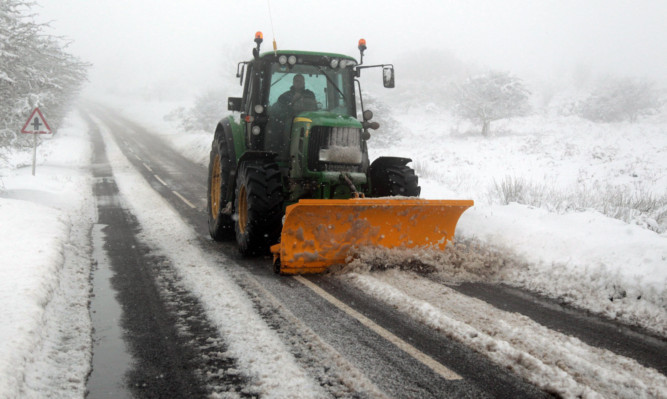
The Beast from the East and the Pest from the West.
You’d hardly think we were talking about the gentle, white fluffy stuff of childhood dreams. Snow is only water, always disappears and looks beautiful. Yet we fear its arrival more than the flu. What’s going on?
Well, the prospect of a terrible white-out sells papers. A London-based tabloid printed the “Beast from the East” headline two months ago. And even though sub-Arctic conditions didn’t materialise, it was the most viewed story on the newspaper’s website.
Are we so scared the winter from hell could be about to return?
C’mon you know which winter I mean. In 2010 snow and icy temperatures meant pipes froze, cars slithered, schools closed, hedges died, tree boughs snapped under tonnes of snow and transport basically ground to a halt.
I visited a friend on Skye and was stuck there for a fortnight!
Trains were cancelled, jack-knifed lorries brought the M8 and M80 to a halt and the army was drafted in. A Scottish Government Minister had to resign, TV pictures were beamed around the world and, let’s face it, our stranded, snow-locked situation made us look like a right bunch of helpless charlies.
It wasn’t exactly our finest hour. We invented the tyre, the TV, the Wellington boot and the fax machine but we looked like folk who couldn’t organise a snow plough round a brewery.
Of course, by the following winter we were better prepared. A bit. Trains were powered, showered and wrapped in 100-yard long polythene bags overnight to stay ice-free overnight. Councils proudly exhibited piles of grit like they were the crown jewels. But snow tyres still seemed like a luxury for most recession-hit Scots, so 2011 brought more slithery chaos when the icy blasts returned.
And though recent winters have been milder, the fear of those two unpredictable white-out years has become etched in Britain’s (adult) collective consciousness. Really, it’s time to get over it.
We should remember the whole of the M80 snow epic.
Locals came out to bring soup and sandwiches to folk stuck in cabs, cars and lorries on gridlocked motorways even taking stranded Scots into their homes to use loos, wash and warm up.
Snow brought out the best and the worst in us. We were both the most generous folk towards those in a pickle and the least prepared for it. Of course, snow can be dangerous, as yesterday’s terrible events in Glencoe proved so starkly. My thoughts are with the families of those affected.
But away from the mountains, with few snowy winters and global warming, not cooling, on the cards, no-one could blame Scots for failing to spend squillions on the kind of snow-clearing kit that keeps our Nordic cousins functioning in their predictably icy winters.
Snow tyres must be fitted by law every autumn that means less helplessness in Nordic communities. Swedish farmers have contracts to clear snow when it reaches a certain depth and to pre-agreed points on the road.
Icelanders put pipes beneath car parks and pavements to carry boiling hot water from geothermal springs to heat homes and offices. Norwegians ski to school and have outdoor nurseries all year round.
In the far north even old ladies use wooden sleighs to get out and about. Indeed, folk in the Arctic North long for snow the brightness lights up the dark, you can walk, snowmobile or even drive across frozen lochs and go ice fishing.
Icelanders leave Xmas lights up until February and all the Nordics make cold, dark days cosy with low lighting and candles inside and even outside in old fashioned lanterns. Perhaps the biggest difference though is that snow and ice don’t kill old people through hyperthermia in the Nordic nations thanks to great insulation and cheap district heating. This is what we need to get right fast.

Enjoy the convenience of having The Sunday Post delivered as a digital ePaper straight to your smartphone, tablet or computer.
Subscribe for only £5.49 a month and enjoy all the benefits of the printed paper as a digital replica.
Subscribe